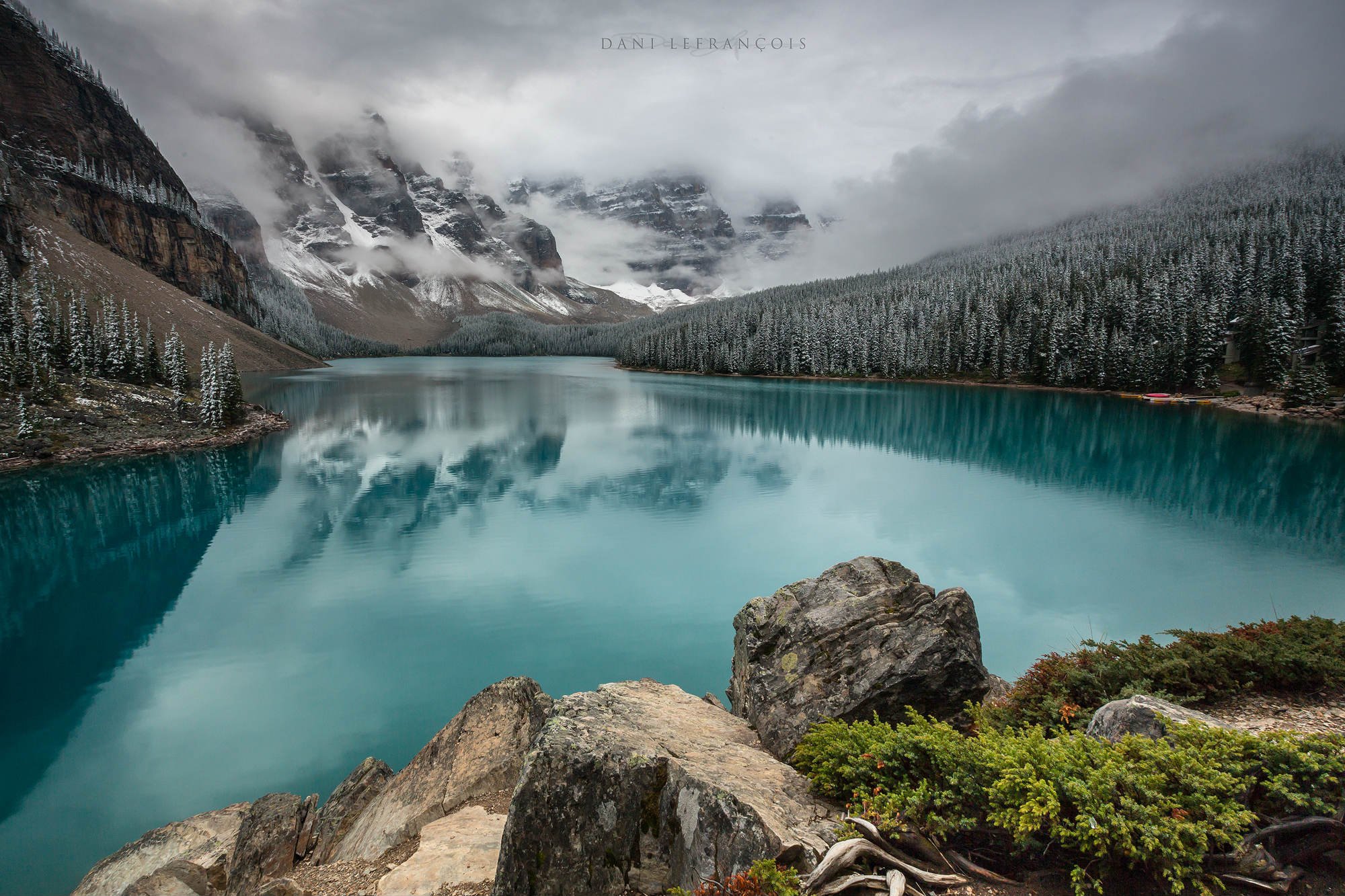
I love a good landscape. Who doesn't?
But what makes a good landscape photo?
Is it the way the image is composed? Is it the lighting? Is it the camera settings?
These are all good questions, and the answer is simple - it's all of the above.
Of course, it takes practice to master landscape photography techniques and a creative eye to bring everything together as well.
It's one thing to read about landscape photography tips. It's another thing entirely to actually see them put to use.
If you want to learn how to take landscape photos, have a look at these stunning examples.

Though the natural inclination is to photograph landscapes in a horizontal format, as you can see above, shooting in vertical format certainly has its merits.
The inclusion of foreground interest in this case gives this shot of Moraine Lake much more depth.
The juxtaposition of the jagged rocks in the foreground with the smooth water of the lake is also a beautiful element that provides some visual tension to the shot.
Editor's Tip: The 16mm aperture used for this shot helped the photographer maintain the depth of field needed to keep everything in focus.

Some photographers shirk from the opportunity to photograph foggy or misty landscapes because it softens the image so much.
But as you can see, when fog and mist is combined with elements that have strong lines, it works beautifully.
In this case, the sharp edges of the mountains in the background and even the silhouetted forms of the trees in the mid-ground give the shot that extra level of definition that looks so lovely paired with the fog and mist.

Sunset gets all the attention when it comes to great light for landscape photography, but sunrise has a lot to offer as well.
In the shot above, the explosion of color lights the sky (and the water below it) on fire.
And while that color is what grabs your attention, the fine details of the ice give the photo beautiful structure that delights the eye even further.

Blue hour might not be as well known as golden hour, but as you can see, it offers unique opportunities for capturing landscapes in a unique way.
Blue hour occurs right before sunrise and right after sunset, and its cool, blue tones are perfectly suited for wintery landscapes like the one above.
In this case, the photographer used a 13-second shutter speed to give the clouds and the water a smoother appearance. The result? An incredibly tranquil landscape photo!

When composing a landscape photo, leading lines can be a powerful tool.
But as you can see in this image, leading lines don't always have to be straight.
Instead, the jagged edge of the frozen shoreline in the foreground and the slope of the mountains in the background work together to drive our eyes towards the prize of this shot - the sunrise.
Directing the viewer's eye in this way helps them to interact with the image more thoroughly, and that's a good thing!
Editor's Tip: Leading lines can be straight, curved, diagonal, converging...there's many ways to incorporate lines to add interest to your landscape photography!

When photographing landscapes, it's absolutely imperative that the horizon be perfectly level. If not, it can throw the entire photo off.
Getting the horizon straight is easy, too. Many cameras have a virtual horizon, and if not, you can use the rule of thirds grid in live view to get things lined up.
Many tripods have built-in bubble levels for getting horizons straight, and you can even get a hot-shoe mounted bubble level as well. In other words, there's no excuse for a crooked horizon!

When you think of a wide-angle shot, you often think of one that's taken in horizontal format.
However, this image was taken on the vertical at 17mm, and as a result, we not only get to see the gorgeous colors of the sky, but also the fine details of the plants in the foreground.
Sometimes it's the small details in a landscape photo that end up taking the image to the next level. With that in mind, always keep your eyes peeled for textures, patterns, colors, shapes, and other features that can add interest to your landscape photography.

Though the rule of thirds suggests shifting the primary subject to the left or right of center, sometimes, the subject looks best if you break that rule.
In the image above, the mountain peak is framed smack dab in the middle of the shot, and it works beautifully.
Also notice how the horizon line is in the middle of the image as well - something that's typically a no-no.
But again, breaking this rule has resulted in a gorgeous photo! Don't be afraid to bend or break the rules - it could greatly benefit your landscape photography.

This photo (and all the others above) were taken with a Canon EOS 5D Mark III. That's an important point because sometimes photographers get caught up in having the newest gear, and the gear you use simply isn't a big deal.
Instead, what's important is that you know how to use the gear you have to get solid shots. That means practicing how you compose a landscape photo, how you frame it, and understanding how to add depth with leading lines, shooting through something, or using a frame within a frame.
If you can master the technical and artistic elements of landscape photography, you can use any camera to create something beautiful.
Article By:-Photographytalk.com
No comments:
Post a Comment